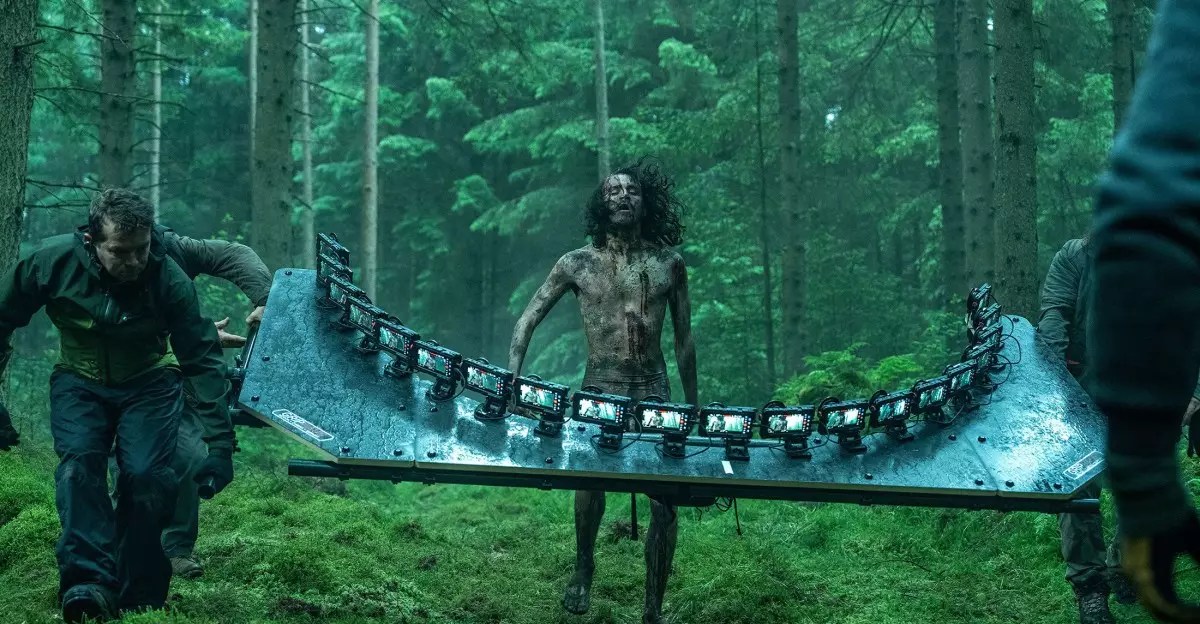In a striking turn for the horror genre, the upcoming film “28 Years Later” is set to redefine cinematic techniques by harnessing the power of 20 iPhones. Director Danny Boyle, known for his innovative approaches, previously brought us the gripping narrative of “28 Days Later,” filmed on a humble digital video camcorder. This time, however, he is blending technology and art more fluidly, embracing the high-definition capabilities of modern smartphones to push the creative boundaries of storytelling.
Boyle’s choice to utilize multiple iPhones is far from a mere gimmick; it represents a significant evolution in film production that reflects the democratization of technology. The use of a 20-phone rig positions the film as a landmark project that acknowledges the evolution of how we capture video. Specific shots designed with this technology promise to offer viewers an unprecedented sensory experience—an experience that is not only visually stunning but also emotionally engaging.
Breaking Conventional Boundaries
Referencing his unique technique as “a poor man’s bullet time,” Boyle captures the essence of the traditional cinematic language while subverting it. The concept allows for an immersive viewing experience—180 degrees of action unfolding before the viewer’s eyes, ensuring that every element of a scene can be explored and manipulated in post-production. The marriage of creativity and cutting-edge technology affords filmmakers the ability to mold their narratives more dynamically than ever before.
In an era where blockbuster films dominate with extravagant budgets and state-of-the-art CGI, Boyle’s approach highlights a refreshing return to basics—using accessible technology to tell compelling stories. By embracing a more unconventional cinematographic choice, he sets a tone that challenges the norms of mainstream cinema.
The Artistic Vision of Chaos and Violence
Boyle’s understanding of the horror genre informs his work with this innovative technology. The graphic nature of scenes shot with the 20-phone rig is crafted to evoke horror in a visceral manner. Rather than relying solely on jump scares or conventional horror tropes, Boyle aims to enthrall audiences through meticulous framing and innovative camera movements which underscore the chaos and unpredictability of violence.
According to Boyle, one particular scene will stand out due to its audacious use of the multi-phone setup. It emphasizes that his focus isn’t just on visuals, but on creating an experience that “kicks you into a new world.” The multi-camera shot not only transforms our engagement with the action but offers a way to dissect the visual flow of the narrative, encouraging the audience to not merely watch but to actively experience the unfolding drama.
Implications for the Future of Filmmaking
“28 Years Later” undoubtedly signifies a milestone in how technology can invigorate cinematic storytelling. By choosing the path less traveled, Boyle ignites curiosity not only about the potential of smartphones as serious filmmaking tools but also about the new narrative possibilities that arise from such creative risks.
As the boundaries between high art and everyday technology continue to blur, filmmakers who embrace this shift will likely define the next era of cinema. This thrilling endeavor by Boyle serves as a poignant reminder that innovation is not solely about expensive equipment or large studios, but about vision, creativity, and the courage to break conventional norms.


Leave a Reply